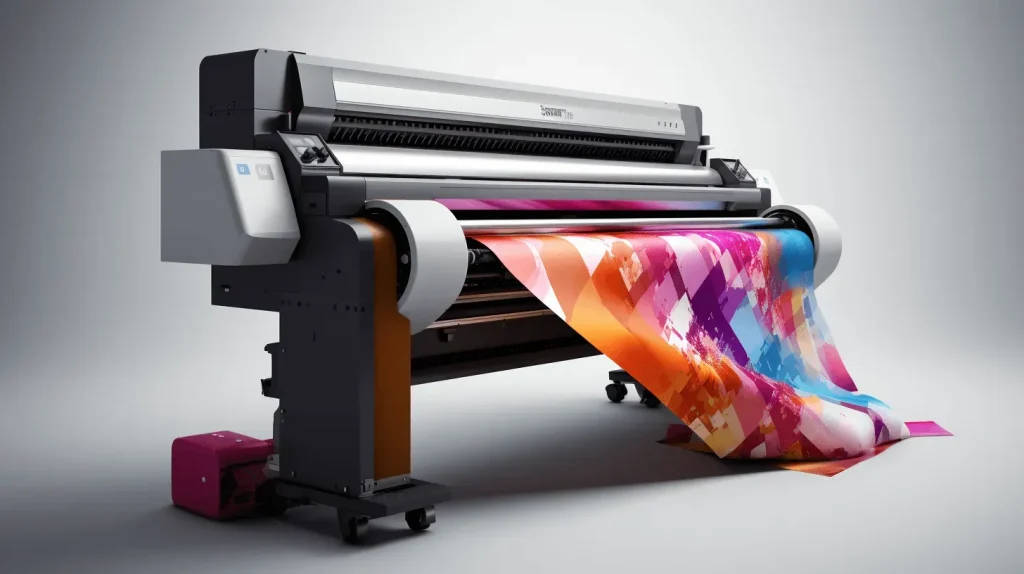DTF printing, or Direct to Film printing, is rapidly transforming the textile industry with its innovative approach to creating high-quality designs on fabric. This method stands out for its ability to produce vibrant and long-lasting prints, making it the go-to choice for both hobbyists and professional printers. If you’re eager to master DTF printing, understanding essential techniques will be crucial for achieving eye-catching and durable results. In this article, we present valuable insights, including our top 10 DTF printing tips, which will guide you through the intricacies of printing on a variety of fabric types. Whether you’re working with cotton, polyester, or blends, the information provided here will ensure your prints not only look stunning but also stand the test of time.
Direct to Film printing, often referred to simply as DTF, has emerged as a game changer in the realm of fabric printing and personalization. This technique allows artists and business owners to transfer designs onto textiles with exceptional detail and color fidelity. By optimizing your approach with the right transfer films and printer settings, you can enhance the overall quality of your projects. Furthermore, understanding the unique characteristics of various fabric types for DTF can significantly elevate your work. With the right DTF printing tips, you will be empowered to create stunning textile art that captures attention and reflects your creative vision.
Essential Tips for Successful DTF Printing
Successful DTF printing hinges on mastering key techniques that enhance the quality and durability of your prints. One of the most important tips is to maintain a clean printing environment. Dust and debris can significantly affect print quality, causing misalignments or ink smudges. Regular maintenance of your printer, including cleaning print heads and checking ink levels, will help ensure consistent, high-quality outputs. Additionally, always double-check your printer settings before each print job; optimizing these settings according to the specific fabric type can prevent common pitfalls.
Another crucial tip is to conduct preliminary test prints. Before diving into a full production run, experimenting with scrap fabric allows you to adjust settings for the best results. This step can help you identify any issues with ink application or color accuracy before committing to larger projects. By taking the time to test and evaluate your prints, you will save resources and time while ensuring the final products meet your expectations for quality.
Understanding Fabric Types for Optimal DTF Printing
Understanding the different fabric types is fundamental for effective DTF printing. Each material, from cotton to polyester, interacts uniquely with inks and films, influencing the vibrancy and durability of printed designs. For example, while polyester tends to produce richer colors, cotton can result in muted hues unless properly treated. It’s essential to assess the fabric blend and coating before beginning to ensure your DTF printing is set up for success. This knowledge enables you to choose the right transfer film and ink settings, ultimately leading to superior results.
Additionally, being aware of how different fabric types handle heat during the curing process can help you avoid damaging your prints. Some fabrics require lower temperatures to prevent melting or burning, while others may need more heat to properly set the ink. Having a solid grasp of these characteristics empowers you to make informed decisions in your printing process, ensuring that every fabric receives the proper treatment for optimal outcomes.
Choosing Quality DTF Transfer Films
Choosing the right DTF transfer films can greatly impact the quality of your prints. Not all transfer films are created equal; the quality of a film can affect its adherence to the fabric and the overall vibrancy of the final print. Investing in high-quality transfer films that match the specific needs of your fabric type will improve the durability and look of your designs. Look for films that offer optimal stretchability and color retention, especially when printing on fabrics subject to frequent movement or washing.
Moreover, the compatibility of transfer films with your chosen inks plays a vital role in achieving successful prints. Certain films are formulated for specific ink types; therefore, understanding which combination works best for your DTF printing setup can lead to superior results. Researching and selecting noted brands within the industry can help you ensure you’re working with products that have been proven to yield excellent outcomes.
The Importance of Proper Printer Settings
Applying the correct printer settings is critical for successful DTF printing. Each fabric type may require unique adjustments in parameters such as temperature, print speed, and pressure to produce the best results. Ensuring that your printer is set up optimally can make the difference between a vibrant, durable print and one that is faded or poorly adhered. Regularly reviewing and adjusting your printer settings based on the fabric and ink types you are using will help you maintain high print quality.
Moreover, most modern printers come equipped with preset configurations for DTF printing, but these may not work perfectly for every situation. Experienced operators often need to fine-tune these settings to suit their specific requirements. Familiarizing yourself with your printer’s capabilities and adjustments can empower you to control the output better and achieve stunning results consistently.
Exploring Pre-treatment Techniques for Fabrics
Pre-treating fabrics is a vital step in the DTF printing process that facilitates better ink adhesion and enhances the longevity of prints. By applying specific pre-treatment solutions, you can prepare fabrics that might otherwise reject the ink. This preparation is especially important for fabric types that are notoriously difficult to print on, such as certain synthetic materials. Understanding the right pre-treatment techniques for each fabric allows you to optimize your prints’ vibrancy and durability.
Additionally, it’s crucial to research the best pre-treatment products for your chosen fabric and printing requirements. Different materials might benefit from different pre-treatments, so investing time in understanding these methods can save you from potential future challenges. Overlooking this step can lead to subpar results, which can be avoided by integrating pre-treatment into your DTF printing workflow.
Curing Process: Ensuring Print Longevity
The curing process is an integral aspect of DTF printing, as it solidifies ink onto the fabric and ensures that the print withstands washing and wear. Each fabric type has distinct curing requirements regarding temperature and duration, making it essential to familiarize yourself with the specific needs of your materials. Failing to adhere to these recommendations can lead to prints that easily fade or peel, diminishing the overall quality of your work.
Moreover, proper curing not only affects the durability of prints but also their appearance. Inadequate curing can result in dull colors or uneven finishes, which are undesirable in professional settings. Investing in good curing equipment, such as heat presses with digital temperature controls, can greatly enhance the effectiveness of your curing process, ensuring that prints look their best and last longer.
Frequently Asked Questions
What is DTF printing, and how does it work?
DTF printing, or Direct to Film printing, involves transferring designs onto a special film which is then applied to the fabric using heat and pressure. This innovative process allows for vibrant, durable prints on a variety of fabric types, from cotton to polyester.
What are the essential tips for successful DTF printing?
For successful DTF printing, it’s crucial to understand the fabric type you’re working with, choose high-quality DTF transfer films, adjust your printer settings correctly, maintain printer cleanliness, and conduct pre-treatment of fabrics when necessary.
What are the best fabric types for DTF printing?
The best fabric types for DTF printing include polyester and cotton blends, as they yield vibrant colors and good adhesion. Knowing the fabric composition is key to optimizing your DTF printing results.
How important is pre-treatment in the DTF printing process?
Pre-treatment is essential in DTF printing as it enhances ink adhesion and longevity. Certain fabrics may require pre-treatment to ensure effective printing, thus improving the overall quality of the final product.
What printer settings are critical for achieving quality prints in DTF printing?
Critical printer settings for DTF printing include temperature, pressure, and print speed. Adjusting these parameters according to the specific fabric will help ensure optimal print quality and adherence.
How can I store my DTF transfers to maintain their quality?
To maintain the quality of your DTF transfers, store them in a cool, dry place away from direct sunlight. Proper storage prevents damage and degradation, ensuring the transfers remain usable when needed.
| Key Points | Details |
|---|---|
| 1. Understand the Fabric Type | Different fabrics react distinctly to the DTF process. Knowing the fabric ensures better adhesion and vibrant colors. |
| 2. Choose Quality DTF Transfer Films | Invest in high-quality transfer films that enhance adhesion and durability, tailored for specific fabric types. |
| 3. Proper Printer Settings | Adjust settings like temperature and print speed according to fabric types for optimal results. |
| 4. Maintain Printer Cleanliness | Regularly clean the print head and nozzles to maintain consistent print quality. |
| 5. Pre-treatment of Fabrics | Pre-treat fabrics to enhance adherence and longevity of prints, especially on inks-repelling fabrics. |
| 6. Proper Curing Process | Follow curing times and temperatures specific to each fabric to set inks correctly. |
| 7. Experiment with Color Profiles | Custom color profiles enhance color accuracy based on fabric and film used. |
| 8. Test Prints | Conduct test prints on scraps to adjust settings and assess ink adhesion. |
| 9. Proper Storage of Transfers | Store printed transfers in cool, dry places away from sunlight to prevent damage. |
| 10. Stay Updated with Trends and Techniques | Keep informed about new technologies and materials to maintain a competitive edge. |
Summary
DTF printing is transforming the textile industry with its cost-effective, durable, and vibrant solutions. Understanding the processes involved, such as knowing your fabric types, choosing the right materials, and proper printer maintenance, can significantly enhance print quality. By implementing practical strategies and staying abreast of the latest trends, both novices and professionals can achieve remarkable results in their DTF printing ventures. Whether for personal projects or business applications, following these guidelines positions you for success, ensuring that your prints not only look stunning but also stand the test of time.



